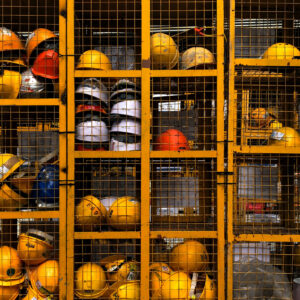 How to make a CRSP exam preparation strategy that works for you
How to make a CRSP exam preparation strategy that works for you
There’s more to successfully passing the CRSP exam than just studying and memorizing textbook materials. As a future candidate, it’s not enough to simply have memorized the various concepts and terminologies to get a good mark.
You MUST be able to bridge the gap between what you have learned and its real-world applications. Let’s review some proven methodologies to implement into your preparation which will ensure your success in both the CRSP and in your future career.
Applying the Golden Circles Concept
In your planning and thought processes surrounding career development and education, it’s crucial to continuously reflect on what you are learning and inquire into how these new skills apply in your workplace and general life. To be successful, you are required to take what you have learned and implement it in such a way which produces results.
The golden circles are a very powerful thought concept that you may or may not be familiar with which can be used when taking on large challenges such as this exam. It identifies 3 steps in approaching difficult tasks from a core level moving outward. Let’s look at how we can use its framework to create a plan of action that generates the results you are looking for, not only with the exam but also in your future career as an OHS professional.
Step 1: Why?
Starting at the core, ask yourself “why do you want to take the CRSP certification exam?” Take the time to really consider your intention in achieving this certification. It is interesting that when CRSP candidates are asked this question, they usually think “how will this certification reflect on their resume and qualifications?” Yes, that is a big factor to consider as it directly affects your employment. But think about what underlying value acquiring this certification has for you individually and for the people who you serve in your organization.
For some, getting CRSP certified is an opportunity to gain the confidence needed to then be able to lead a team. For others, it could be to fulfill on a value they have for education. These are two common examples, but your “why” can be anything that motivates, drives, and inspires you. If you are having difficulties identifying your “why”, a good practice is to envision yourself as a CRSP graduate and how that would reflect in your view of yourself individually, at work, and in society. Spending the time to get a clear image of your “why” is the most important step in this whole process and it is what will keep you committed to seeing this certification through to the end.
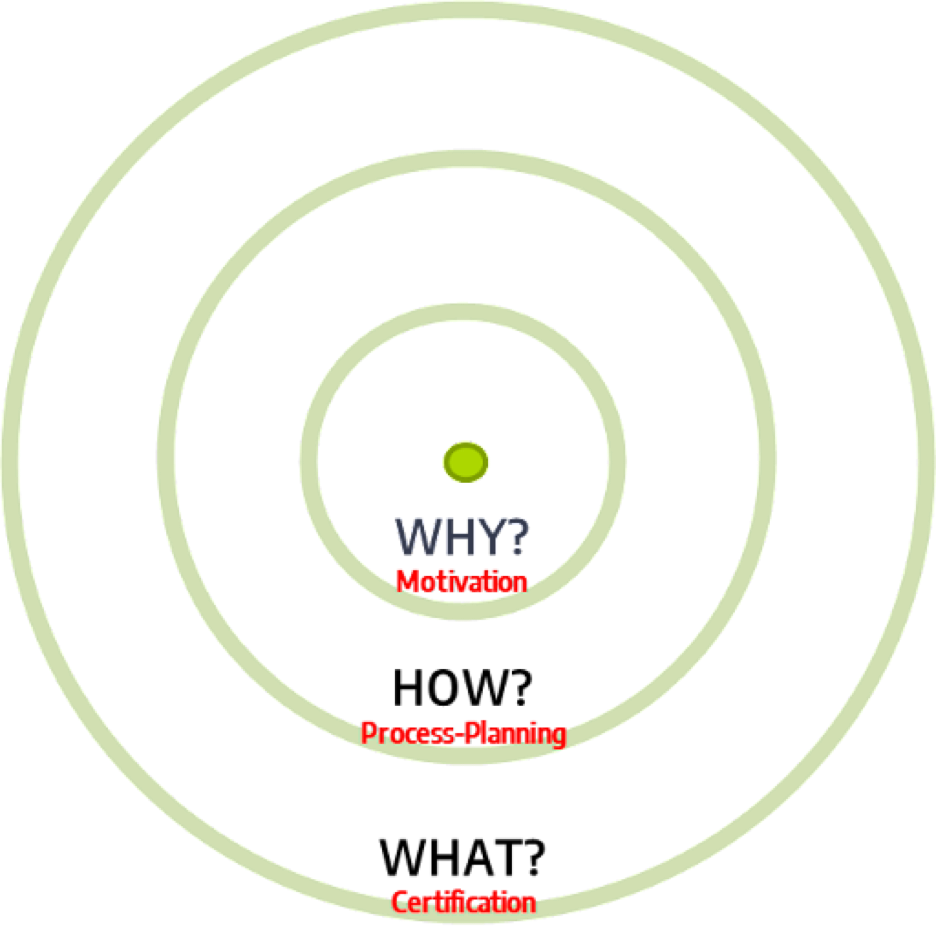
Step 2: How?
After you have explored your “why”, you can begin to consider “how” you have to plan for achieving your goal. Think about your other commitments, both work and personal, and how much time you will be able to devote to exam preparation. Make sure you’ve considered your timeline and registered for the exam. (Read this blog post on the best way to do that.)
Step 3: What?
Now’s the time to determine “what” the areas you should focus on are. This would include: creating a plan of action congruent to your schedule, determining what areas you are most and least competent in, and focusing on developing your weaknesses by taking action on following through with your commitment. Following this intrinsic approach, focusing on your individual path throughout the process, you can fulfill the outcome you are trying to generate.
Exam Preparation
Let’s consider the various aspects of the preparation process, including: how to approach and structure your study plan, what competencies you will be required to know, exam details and references, the preparation time frame, studying methods and recommendations, and how our CRSP Exam Crash Course can provide you with a proven and tested method of achieving your goals.
CRSP Study Materials
To begin, let’s take a look at the CRSP study materials for the BCRSP examination. The BCRSP has included 6 category classifications to group the exam competencies. This pie chart names and breaks down the weightings of the 6 categories. Please note that the ratio of the questions do not perfectly follow the percentages shown here. This is because of the slight overlaps between questions in the exam, but overall, we could say that the “Health and Safety Management” competency makes up the largest percentage of questions.
“Hazard and Risk Identification & Assessment” and “Hazard and Risk Control and Mitigation” are the next highest categories. Together, they include roughly 34% of the exam content. The remaining competencies account for 12% each and total to the remaining 36% of the exam content. Make sure that you first assess how much of the exam materials you know and how much you need to learn. The exam covers some concepts very thoroughly so just being familiar wouldn’t suffice (refer to the competencies breakdowns and references). When going over them, be objective and honest in your estimations of how well-versed you are. This way you won’t under or overestimate the workload.

CRSP Examination Length & Format
Just to give an idea of the BCRSP’s CRSP examination format and length, it usually consists of 200 multiple-choice questions which candidates will have to answer in approximately 3.5 hours (or 210 minutes). On average you will have one minute to allocate to each question. Roughly 70% of the questions are independent and 30% are situational or cased based. Overall, only a fraction of the exam is knowledge and comprehension questions. 40% of questions are application based and the other 35% test for critical thinking.
How do I make a plan and get started?
Any approach that you use in preparing for the CRSP exam, as long as it works for you, will be a good plan. However, this does not mean that just studying or preparing at random based on your “in the moment feelings” will be effective. In contrast, you should follow a structure that suits your specific situation, learning style, and timeline.
Next, talk to people in your life who love and support you! Let them know how being CRSP certified will impact your life and the people you are serving. Share how your studies empower you to express yourself amongst your CRSP peers and to contribute to your organization at a higher level. As the saying goes “speak it into existence”. By expressing your goals and getting the support of your loved ones, you make it “real”. This will create an intrinsic need to follow through and also decreases your likelihood of giving up.
Then, make your study plan. You have to know exactly how much time you have before the date of the CRSP exam. After you have determined all of the content and subject matter you will need to cover, work backwards and design a plan with set deadlines and objectives. Be sure to account for your work schedule, holidays, travel plans, and anything else that may get in the way of your studies. Again, be reasonable, don’t commit to an unnecessarily condensed timeline or take it too easy. Follow a structure and timeframe which works for you!
How meticulous you get with your CRSP exam study plan is up to you and depends on various personal factors such as prior level of competence, study habits, and so forth. In general, break down study plans into weekly objectives, however, feel free to adjust to whatever programming works best for you.
Overall, make sure to allocate enough time to get through all the CRSP exam materials well before your exam date. For some, “enough time” may mean two to three hours of studying per day, while for others it’s perfectly normal to need four to six hours per day of studying. In general, it’s smart to finish all the content at least 1 month in advance which will give you sufficient time to review and do sample questions.
Study Approach Based On Accomplishment
Taking a more detailed look at how to structure your study plan, it’s important to consider the order in which you approach the content. A common question about the CRSP exam is “in what order should I study the modules?” Most individuals tend to start with the content that they are most familiar and confident with.
As human beings, we look for the easiest path available and although the logic behind this approach is understandable, it often leads to issues when estimating preparation time. On many occasions, following this approach has led to a feeling of overconfidence early on as the material is easiest. But when the time comes for studying the more difficult content, a looming sense of anxiety sets in due to the rate of progress stalling.
Taking an alternative approach, by focusing on what you don’t know first, can reduce the risk of cramming material at the end.
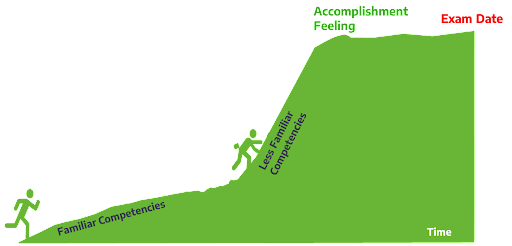
Tip: take the “less Familiar first” approach! If you follow this approach, you will ensure that you give yourself enough time to study and overcome the more difficult aspects of the materials. This will give you a sense of accomplishment early on and decrease the possibility of stress in the future. However, the downside to this is that you may forget the more difficult material due to the prolonged delay.
Therefore, candidates who follow this approach will have to make sure that they go back and review the less familiar materials again, or continuously, so it stays fresh as the exam date draws near.
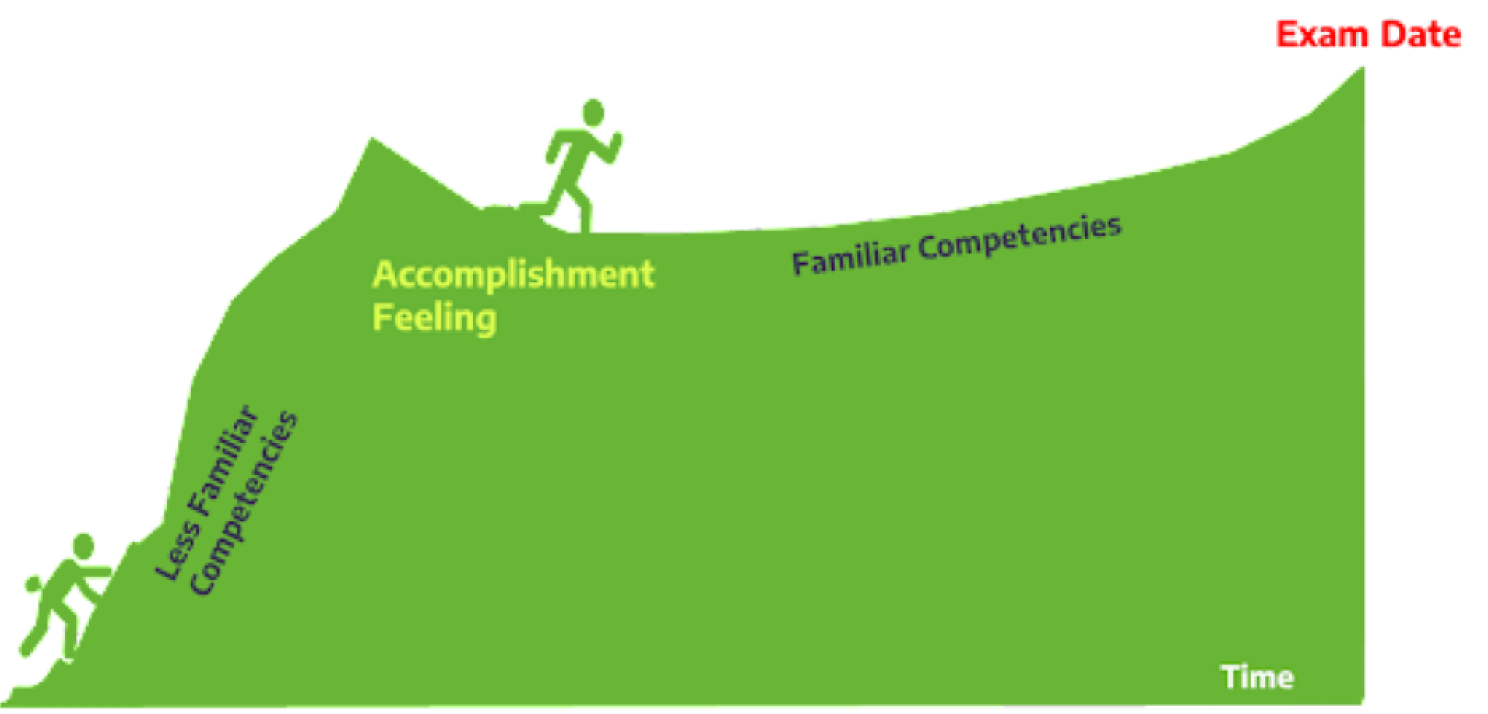
Tip: we recommend a dynamic approach
Using a “dynamic plan” approach for the CRSP exam, which combines both approaches to reviewing familiar and less familiar competencies is an ideal solution to the drawbacks of the previous methods. As the diagram shows, you could alternate between studying more and less familiar content every couple of weeks. This way, your feeling of accomplishment will be gradual; and likewise, your level of stress will be distributed proportionately through the study period. The full feeling of accomplishment will still happen closer to the end, but this way you will be able to manage your stress levels properly and reduce the risk of burning out

